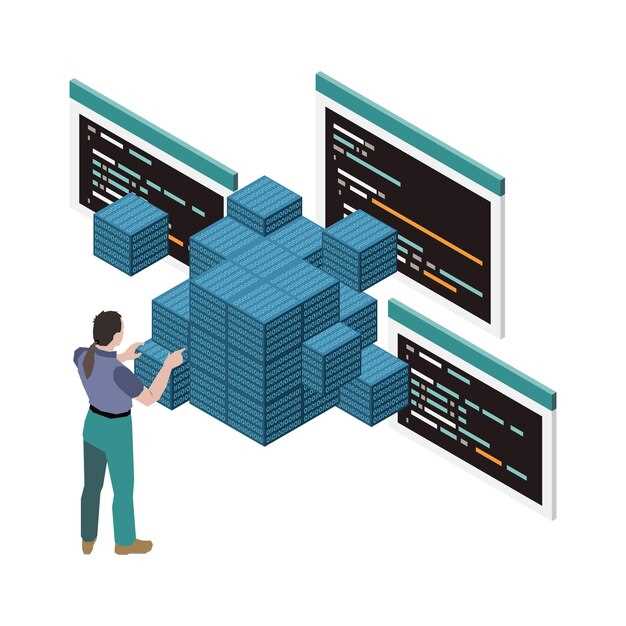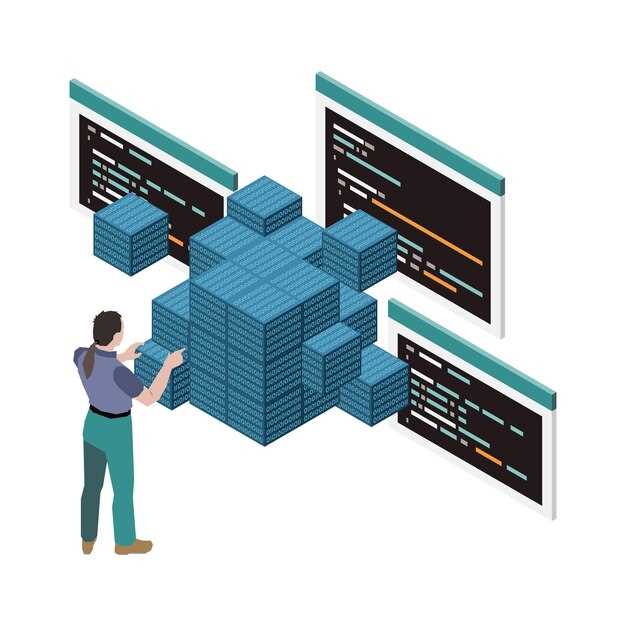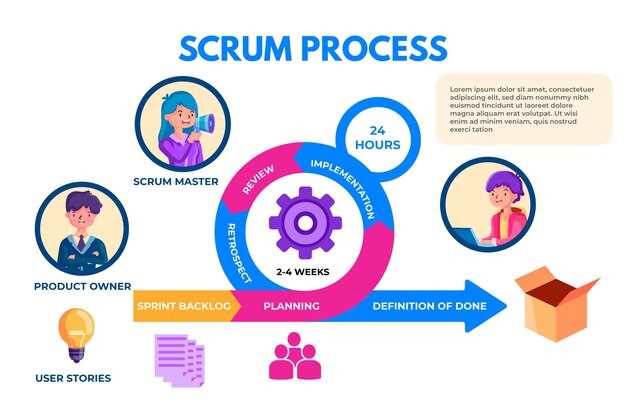Adopt microservices architecture when you aim for scalability and agility in software development. By decoupling services, your team can work on individual components concurrently, allowing for faster development and deployment. This simultaneous progress not only enhances agility but also enables seamless incorporation of innovations as your project evolves.
Transitioning to microservices encourages the use of different technologies tailored to specific tasks. This flexibility means you can leverage the best tools available for each component, rather than being constrained by a single technology stack. However, balancing this advantage requires a well-considered strategy to manage potential complexity that arises with heterogeneous systems. Thoughtful planning and robust backend support are key to successful implementation.
While microservices offer numerous benefits, developers should also prepare for challenges such as increased operational overhead and the need for comprehensive monitoring solutions. The complexity of coordinating multiple services can be mitigated through streamlined communication protocols and an emphasis on continuous integration and delivery. Integrating these solutions into your pipeline lays the groundwork for maintaining system reliability and performance.
Advantages of Microservices Architecture

Break down your application into smaller, independent components to improve scalability and flexibility. Each microservice can be developed, deployed, and scaled independently, allowing teams to focus on specific functionalities. This division enables parallel development, speeding up the release cycle and simplifying the integration of new features.
- Scalability: Microservices allow individual components to be scaled based on their specific demands. If a particular service experiences higher load, only that service needs to be scaled, optimizing resource allocation and reducing costs.
- Technology Agnosticism: Choose the best technology for each service. If one part of the system performs better with a particular programming language or framework, implement it without impacting other components, enhancing performance and future-proofing the system.
- Fault Isolation: Enhance system reliability by isolating failures to individual services. If one service fails, it doesn’t bring down the entire application, which means improved uptime and a better user experience.
- Continuous Deployment: Facilitate a more agile development environment. Teams can deploy updates or rollbacks to individual services without requiring a full-scale system redeployment, reducing time-to-market for new features and bug fixes.
- Better Organization: Align teams around business capabilities, with each team taking full ownership of a service. This clear separation of concerns enhances accountability and improves the ability to innovate within each service area.
Utilize these benefits to create a robust, adaptable, and scalable software system that aligns with your business goals. Transitioning to microservices requires thoughtful planning, but the rewards in terms of flexibility and speed are substantial.
Facilitation of Continuous Deployment
Decouple service deployments to speed up release cycles effectively. With microservices, separate components of your application can be deployed independently, minimizing downtime and reducing risks associated with large-scale changes. This autonomy allows teams to push updates and features without disrupting the entire system.
Automate your deployment processes using robust CI/CD pipelines. Tools like Jenkins, CircleCI, and GitLab CI enable seamless integration and continuous delivery of your microservices. Automating builds, tests, and releases ensures faster and more reliable deployment, reducing manual errors.
Implement canary releases and blue-green deployments to test new features with minimal impact. These strategies provide a safe way to introduce changes by gradually rolling out updates or switching traffic between identical environments. Monitor performance and gather feedback to refine deployments further.
Leverage containerization technologies such as Docker to streamline the deployment process. Containers encapsulate your microservices and their dependencies, ensuring consistent execution across various environments. Coupled with orchestration tools like Kubernetes, scaling deployments becomes more manageable.
Establish clear communication channels within your team to coordinate deployment efforts. Effective communication is critical when dealing with multiple microservices, as it prevents overlap and ensures that dependencies between services are appropriately managed.
By applying these strategies, you can optimize the continuous deployment of your microservices, resulting in a more scalable and resilient software architecture.
Exploring how microservices enable seamless integration and frequent updates.
Leverage microservices to enhance integration capabilities across different systems. Structuring applications into independent services allows each service to communicate with others through APIs. This modular setup leads to smoother cooperation between disparate systems, ensuring each service can be deployed, upgraded, or scaled independently without affecting the entire application. Prioritize standards like RESTful APIs and message brokers to achieve consistent, reliable integration.
Streamline your update process by adopting continuous integration and continuous deployment (CI/CD) pipelines. These automated procedures facilitate frequent and reliable updates to individual microservices. Automation reduces the risk of human error, speeds up deployments, and allows for quick rollbacks if needed. Focus on testing each microservice in isolation to resolve specific issues faster and ensure the unaffected services continue running without interruptions.
- Utilize containerization tools like Docker to package microservices with their dependencies. This approach simplifies deployment and guarantees consistent environments from development through production.
- Opt for orchestration platforms such as Kubernetes to manage service scaling, load balancing, and fault tolerance, enhancing the efficiency of integration efforts.
- Assemble cross-functional teams to handle distinct services, which empowers developers to make rapid updates and react swiftly to changes in business requirements.
- Incorporate monitoring solutions that provide insights into service performance and integrate alert systems to detect and address issues proactively.
Decentralized Data Management
Adopt a decentralized data management approach to achieve high scalability in microservice architectures. By storing data locally within each microservice, you reduce the dependencies on a centralized database, which helps to eliminate bottlenecks and single points of failure. This strategy empowers individual services to manage their own data, leading to increased autonomy and flexibility.
To ensure consistency and data integrity, implement patterns such as Command Query Responsibility Segregation (CQRS) and Event Sourcing. CQRS allows separating read and write operations, optimizing each for performance and scalability. Event Sourcing, on the other hand, keeps a sequential log of changes, allowing you to reconstruct states and undo errors.
Consider using the following table to guide your technology choices for decentralized data management:
| Technology | Use Case | Advantages |
|---|---|---|
| Apache Kafka | Event streaming and storing events | High-throughput, scalable, and durable storage for event data |
| Apache Cassandra | Wide-column store for time-series data | Highly available and performant for large-scale data handling |
| MongoDB | Document database for diverse data types | Flexible schema design and easy horizontal scaling |
Utilize these technologies to tailor your data management strategy to each microservice’s needs, ensuring optimum performance and efficient scaling. Carefully design data partitioning and choose appropriate consistency models to balance the trade-offs between availability and consistency according to your system’s specific requirements.
Examining the benefits of separate databases for each service and its impact on scalability.
Implementing separate databases for each microservice maximizes scalability and efficiency. Each microservice can tailor its database to meet its specific requirements without being constrained by a centralized schema or shared data model.
- Reduced Dependencies: Microservices with their own databases eliminate cross-service database dependency issues. Teams can update and deploy services independently, enhancing agility and reducing coordination overhead.
- Performance Optimization: With service-specific databases, performance tuning becomes more targeted. You can choose the most suitable database technology and optimize it for particular data access patterns unique to each service.
- Enhanced Data Security: Segregated databases provide better security. Sensitive data can be isolated within microservices that handle it, reducing the risk of unauthorized access through other services.
- Improved Fault Tolerance: If a service encounters a database issue, it only affects that particular service, reducing the potential impact on the entire system. This separation helps maintain overall system availability and resilience.
- Simplified Scaling: Each database can scale independently based on the service’s demand, avoiding unnecessary resource allocation or bottlenecks created by resource-hungry services.
- Versioning Flexibility: Separate databases allow microservices to handle schema changes independently. This flexibility prevents cascading failures and simplifies database migrations.
Adopting separate databases for each microservice streamlines development and operational processes, leading to a highly scalable and flexible architecture. This approach meets evolving business demands promptly and effectively, ensuring that each component operates at its best capacity.
Resilience and Fault Isolation
Focus on designing microservices to be independently deployable and maintainable. Decouple services to ensure that a failure in one microservice does not cascade to others. This architecture enables isolating faults, thereby improving the overall system reliability.
Implement circuit breakers to prevent a failing service from overwhelming dependent services. This technique detects failures and prevents the constant retry of failed operations, allowing services to recover without human intervention.
Consider adding retry policies with exponential backoff for transient faults. Balancing retry attempts and wait times can ensure smoother recovery during temporary outages, reducing system strain.
Utilize bulkhead patterns to segregate resources between different microservices. This strategy limits the impact of failures to specific areas, ensuring resources remain available for unaffected services while an issue is resolved.
Conduct regular failure simulations through chaos engineering to identify potential weaknesses. By systematically introducing faults in a controlled environment, teams can better prepare for real incidents, improving resilience planning.
Maintain updated monitoring and alerting systems to quickly detect service anomalies. Early detection through robust monitoring allows teams to address issues before they escalate, minimizing downtime and service disruptions.
Overall, fostering a culture of resilience and prioritizing fault isolation in microservices architecture not only strengthens individual services but also reinforces the entire system’s stability, enabling seamless scalability.
Understanding how microservices minimize system-wide failures by isolating faults.
Focus on designing each microservice to handle specific functionalities independently. When a fault occurs, its impact remains confined, preventing a domino effect that could collapse the entire system. Deploy microservices separately to allow fault isolation; failures in one service won’t cascade to others. For example, if the payment processing service encounters an error, the user authentication service continues operations unaffected. Implement circuit breakers to detect anomalies early and stop problematic service interactions before they spread.
Evolving microservices independently further supports robustness. Use diversified technology stacks to tailor services according to their specific needs. This heterogeneity prevents widespread issues, as a flaw in one technology doesn’t threaten the entire ecosystem. Leverage automated monitoring tools to pinpoint and rectify failures quickly, ensuring continuity in vital processes. Comprehensive logging provides insights into failures, enabling faster troubleshooting and reducing system downtime.
Adopt message queues between microservices to decouple processes efficiently. This approach means if a receiving service is down, the messages are stored and processed once it’s operational again, mitigating data loss or blockage. Rate limiting within individual services can throttle incoming requests, safeguarding the service from overloading and preventing failure sprawl. Constantly test and refine these mechanisms using resilience testing techniques to verify fault isolation efficacy, preparing the system for unforeseen issues.
Technology Diversity
Prioritize a diverse technology stack to optimize how microservices interact and perform. A flexible approach enables teams to select the best tools for specific tasks, enhancing overall system efficiency. Adopt different programming languages, databases, and frameworks that best suit each microservice’s requirements. This allows developers to tackle each problem with the most appropriate technology, potentially reducing resource consumption and improving performance.
Adopt a polyglot strategy where your services communicate effectively despite varying underlying technologies. Implementing well-defined APIs and using standards such as REST or gRPC ensures smooth interaction between services written in different languages. This approach minimizes dependencies between teams and allows parallel development, speeding up delivery times without compromising on service quality.
For successful implementation, prepare a strategy for managing various technologies. Ensure robust documentation and consistent coding standards across languages and frameworks. Employ automation tools for testing, deployment, and monitoring to maintain stability and reliability within your diverse environment.
| Advantages | Challenges |
|---|---|
| Technology fit for purpose | Increased complexity |
| Improved performance | Higher learning curve |
| Flexible team skill utilization | Integration demands |
Invest in a training plan to familiarize your team with multiple technologies, reducing skill gaps. Encourage cross-training sessions to build a versatile team capable of handling diverse microservice components. This holistic approach ensures that your software remains scalable and adaptable to future technological trends.
Discussing the flexibility to use different technologies across different services and its advantages.
Leverage the flexibility to employ diverse technological stacks within microservices to enhance system integration and customization. This approach allows development teams to select the most appropriate technology for each service’s specific needs, increasing efficiency and innovation. For instance, a team might utilize Python for data processing services due to its powerful libraries, while opting for Node.js for services requiring high concurrency due to its non-blocking I/O model.
This flexibility minimizes limitations imposed by a single technology stack, enabling teams to tap into the strengths of different programming languages and frameworks. Integrating diverse tools also allows for more granular scaling. A service that experiences high traffic can be optimized and scaled independently without impacting other services, thus preserving resource allocation.
Moreover, using different technologies can elevate the capacity for team specialization. Developers with expertise in specific languages can focus on areas they excel in, promoting rapid development and high-quality outcomes. Flexibility also facilitates smoother integration of third-party services or legacy systems, allowing for a more cohesive ecosystem.
While this approach involves managing complexity across service boundaries, the benefits of adopting varied technological solutions across microservices infrastructure often far outweigh the challenges. It enables organizations to remain adaptive and competitive, tailoring their technological choices to align with strategic goals and market demands.
Challenges and Considerations in Microservices
Focus on establishing a robust communication strategy. Microservices, by design, exist as independent units, which may lead to challenges in ensuring seamless communication between services. Adopting asynchronous messaging or API gateways can mitigate risks associated with network reliability and latency.
Implement comprehensive monitoring and logging from the outset. Given the distributed nature of microservices, effective monitoring tools are indispensable for identifying and resolving issues swiftly. Solutions like Prometheus, Grafana, and ELK stack are instrumental in maintaining system health.
Address data management complexities with distributed databases. Each microservice may need its own database, leading to potential data consistency challenges. Use patterns such as Event Sourcing or CQRS to maintain data integrity across services.
Prioritize security by employing defense-in-depth strategies. Secure APIs, manage sensitive data appropriately, and ensure compliance with relevant regulations. Regularly updating and scanning for vulnerabilities is crucial to safeguard against potential threats.
Plan for scalability through automated deployment pipelines. Leveraging continuous integration and continuous deployment (CI/CD) pipelines allows teams to deploy microservices efficiently and scale them as needed. Tools like Kubernetes can assist in managing service orchestration and scaling.
Establish a strong team culture focused on collaboration. Encourage developers to be responsible for their services throughout the lifecycle, promoting a sense of ownership. Regular knowledge sharing sessions can enhance team expertise and foster innovation.
Ensure testing strategies are robust and comprehensive. Unit tests, integration tests, and end-to-end testing are essential to preserve the integrity of services. Incorporate automated testing tools to streamline the process and reduce human error.
Video:
Mastering Microservices Architecture with Django
Mastering Microservices Architecture with Django
Q&A:
What are the main advantages of using microservices for scalable software development?
The key advantages of microservices include enhanced scalability, flexibility in using different technologies, easier maintenance with smaller, manageable codebases, and increased resilience, as individual components can fail without bringing down the entire system. Microservices also facilitate faster deployment and development cycles due to their modular nature.
How do microservices impact the development and deployment speed of software projects?
Microservices can significantly speed up development and deployment since teams can work on different services independently of one another. This not only reduces bottlenecks but also allows for parallel development and integration of new features, ultimately improving time-to-market.
What are some challenges developers might face when adopting a microservice architecture?
A few challenges include increased complexity in managing multiple services, potential communication overhead due to network latency between services, and the need for effective monitoring and debugging tools. Additionally, achieving data consistency across services can be more complex compared to a monolithic system.
In what scenarios might the adoption of microservices be less beneficial?
Microservices may be less beneficial for smaller projects or applications with limited functional scope, where the added complexity and overhead might outweigh benefits. For teams without the necessary expertise or resources to manage distributed systems effectively, a monolithic architecture might be more feasible.
How does microservices architecture contribute to software resilience?
Microservices architecture contributes to software resilience by isolating failures to individual services. This means if one service encounters an issue or crashes, it does not necessarily affect the entire system, allowing the rest of the application to continue operating normally while the problem is addressed.
What are the main advantages of using microservices for scalable software development?
Microservices offer several benefits for building scalable software systems. One of the primary advantages is that they allow independent deployment of different services. This means teams can work on different components simultaneously without interfering with each other, which speeds up the development process and reduces time to market. Additionally, microservices enable better fault isolation; if one service fails, it doesn’t necessarily bring down the entire system. They also facilitate the use of different technologies and languages for different services, allowing teams to choose the best tools for each job. Finally, microservices can improve resource utilization and optimize costs, as resources can be allocated more precisely according to the needs of individual services.
What challenges might a team face when transitioning from a monolithic architecture to microservices?
Transitioning from a monolithic architecture to microservices can present several challenges. One major issue is the increased complexity in managing communication between services, which requires robust API management and service discovery solutions. There’s also the need for a cultural shift towards a more DevOps-centric mindset, as effective microservices implementation requires close collaboration between development and operations teams. Additionally, the team will need to address data consistency, as distributed systems often experience challenges in keeping data synchronized across services. Implementing a successful microservices architecture also demands comprehensive monitoring and logging to quickly identify and resolve issues. This shift can also lead to higher initial costs due to the investment in new tools and infrastructure required for microservices.



